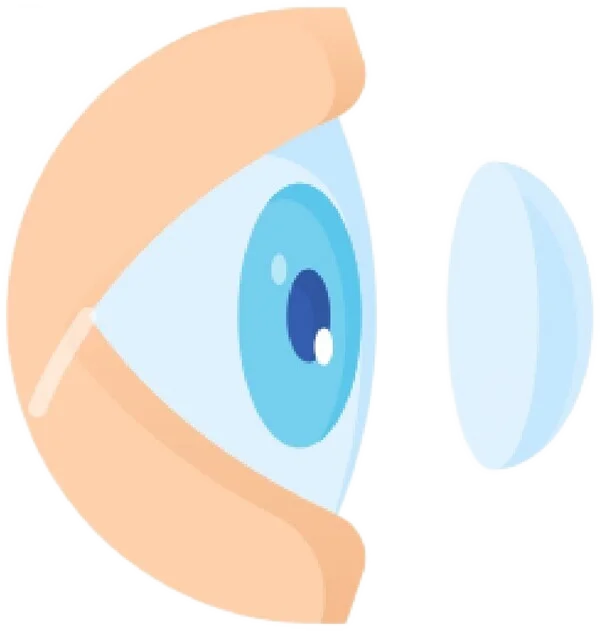
Introduction
Uveitis is inflammation of the uvea, the middle layer of the eye responsible for supplying blood to various eye structures. This condition can arise from infectious or non-infectious causes and may affect different parts of the uvea, leading to a variety of symptoms and potential complications.
Ocular inflammation refers broadly to swelling and irritation of eye tissues, with uveitis being a common and significant form. Prompt diagnosis and treatment are essential to control inflammation, relieve symptoms, and protect vision. Relapses are common, so ongoing care and monitoring are key to managing this condition effectively.
Causes and Risk Factors of Uveitis and Ocular Inflammation
What Causes Uveitis and Ocular Inflammation?
Uveitis and ocular inflammation can result from a range of factors, including infections, immune system disorders, and trauma. Understanding the underlying cause is important for effective treatment and management.
Common causes and risk factors include:
- Eye trauma
Injury to the eye can trigger inflammation of the uvea. - Infections
Viral infections like herpes zoster or bacterial infections can lead to uveitis. - Inflammatory disorders
Conditions such as ulcerative colitis and other autoimmune diseases may cause ocular inflammation. - Immune system disorders
Overactive immune responses can mistakenly attack eye tissues. - Cancer (rare)
Some cancers may involve ocular inflammation as part of their presentation.
Early identification of these causes helps guide targeted treatment and improve outcomes.
Types of Uveitis
The Different Types of Uveitis
Uveitis is classified based on the part of the uvea affected. Identifying the type is crucial for accurate diagnosis and treatment planning.
Anterior Uveitis (Iritis)
Description:
Inflammation of the iris, the coloured front part of the eye surrounding the pupil.Who it affects:
Most common type; affects people of all ages, often younger adults.Speed of progression:
Symptoms can develop quickly and may recur.
Intermediate Uveitis (Cyclitis)
- Description:
Inflammation of the ciliary body, located behind the iris, which controls lens shape. - Who it affects:
Typically affects younger adults and children. - Speed of progression:
Often chronic with episodes of flare-ups.
Posterior Uveitis (Choroiditis)
- Description:
Inflammation affecting the choroid, the layer of blood vessels at the back of the eye. - Who it affects:
Can occur at any age, often linked with systemic diseases. - Speed of progression:
May be gradual or rapid depending on cause.
Panuveitis (Diffuse Uveitis)
Description:
Inflammation involving all parts of the uvea (iris, ciliary body, and choroid).Who it affects:
Can affect any age group; often more severe.Speed of progression:
Usually acute but can be chronic if untreated.
Early Signs & Symptoms
Common Symptoms of Uveitis and Ocular Inflammation
Recognising early symptoms of uveitis is essential to seek prompt care and prevent complications. Symptoms can vary depending on the type and severity of inflammation.
- Eye pain
Often described as a dull or aching discomfort, sometimes sharp. - Redness of the eye
Caused by inflammation and increased blood flow to the affected area. - Sensitivity to light (photophobia)
Bright lights may cause discomfort or pain. - Blurring or decreased vision
Vision may become foggy or less sharp. - Dark spots or floaters
Small shapes or shadows drifting across the field of vision. - Tearing or watery eyes
Excessive tearing can accompany inflammation.
Diagnosis and Treatment of Uveitis and Ocular Inflammation
Diagnosis begins with a thorough eye examination, including pupil dilation to inspect the uvea and surrounding tissues. Additional tests such as blood work, imaging, or analysis of eye fluid may be required to identify underlying causes. Treatment aims to reduce inflammation, relieve symptoms, and prevent complications. This often involves corticosteroid eye drops, oral medications, or injections, depending on severity. In some cases, immunosuppressive drugs or surgery may be necessary to control inflammation and protect vision. Early and ongoing management is vital to improve outcomes.
Why Timely Diagnosis Matters
Early diagnosis of uveitis and ocular inflammation is crucial to control inflammation before it causes permanent damage. Prompt detection allows for effective treatment, reducing the risk of complications and preserving vision.
Timely diagnosis enables your ophthalmologist to:
- Identify the type and cause of inflammation accurately
- Monitor disease progression and adjust treatments as needed
- Prevent complications such as vision loss, cataracts, or glaucoma
- Initiate early interventions to reduce inflammation and discomfort
- Support long-term eye health and maintain quality of life
Addressing uveitis early significantly improves outcomes and helps protect your vision.
Continue Learning About Other Eye Conditions
Other Eye Conditions
The eyes are the most complex sensory organ in our bodies. The eyes provide vision by recording images of our surroundings that the brain will interpret. Although the eye measures only about an inch...
General Ophthalmology
The General eye examination is more than just getting your eyes checked for a lens prescription. It involves several tests to check your eyes for vision and for any...
Worried About Your Vision?
Schedule a consultation with Mr. Mo Majid to evaluate your eye health.
Quick Answers About Uveitis and Ocular Inflammation
What causes uveitis?
Uveitis can be caused by infections, autoimmune diseases, eye injuries, or sometimes the cause is unknown.
Is uveitis contagious?
No, uveitis itself is not contagious, but some underlying infections causing it can be.
Can uveitis lead to permanent vision loss?
If untreated, uveitis can cause serious complications that may result in permanent vision loss.







